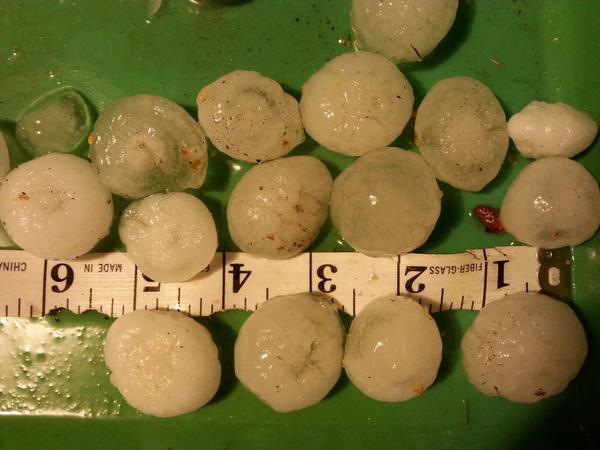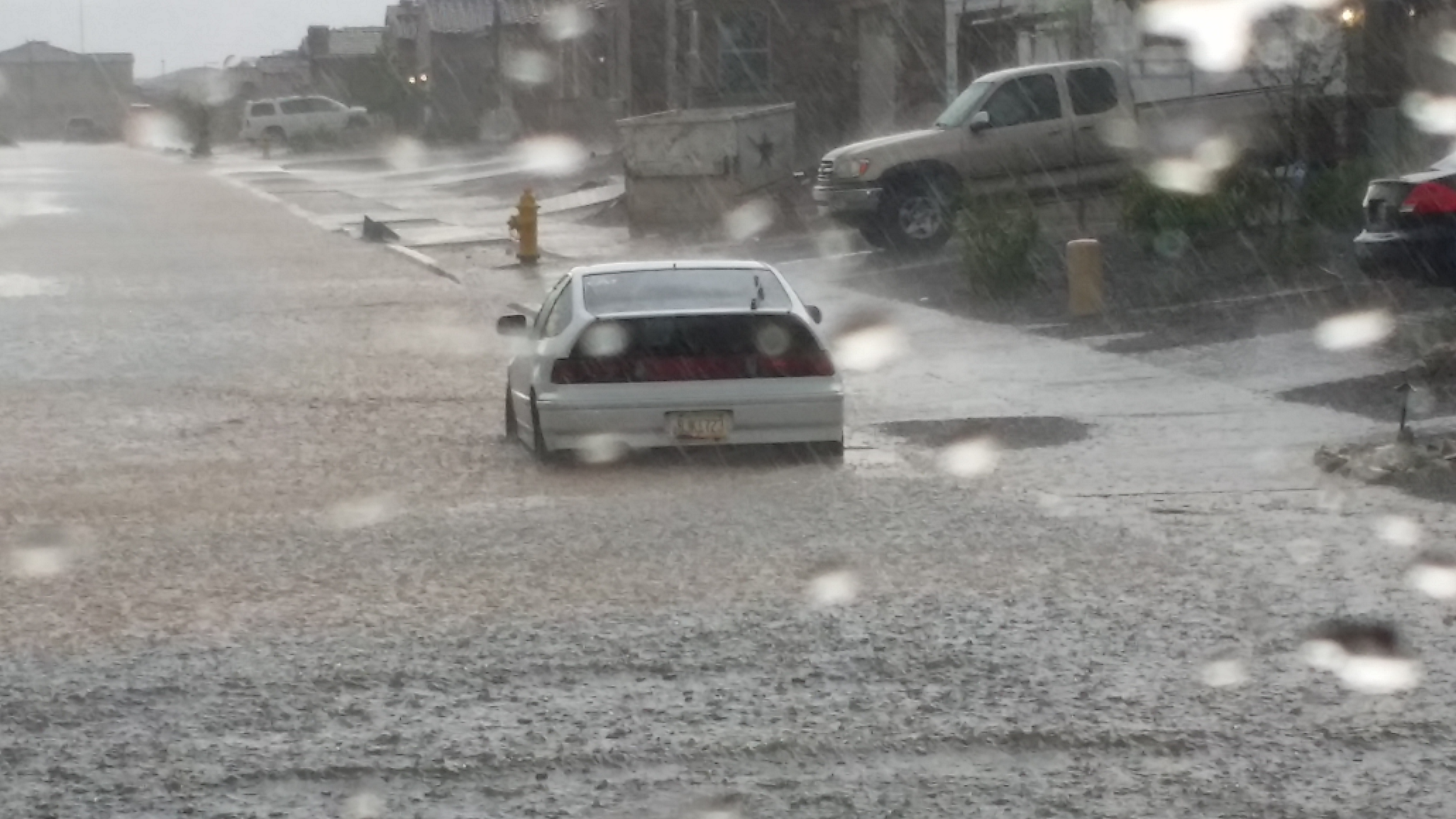RAIN AND HAIL:
Monsoon thunderstorms can be very isolated.
During the monsoon months of June, July, August and September, we receive an average of 2.71 inches of rain at Phoenix Sky Harbor. That is nearly one third of our yearly rainfall total.
Monsoon rain comes so fast that our dry desert soil can’t take all of it in and it runs off causing flash flooding. Streets, washes and riverbeds all fill up very fast and sometimes without much warning.
Our wettest monsoon occurred in 1984, when we picked up 9.38 inches of rain. The driest monsoon was in 1924 when we saw only .35 inches of rainfall.
Sometimes, our monsoon storms can also bring hail.
 Erin Christiansen
Erin Christiansen
If the air is cold enough, water droplets in the clouds can begin to freeze and collect on each other. When they begin sticking together, giant pieces of ice form.
These hail stones get bigger and bigger as they get carried up and down through the cloud until they eventually fall to the ground.
As they fall, the air temperature warms them up causing the ice to melt.
If the ice melts completely, it comes down as rain. If not, we get hail.
Typically, during the monsoon, the air is so warm that most hail melts before it reaches the ground.
FLASH FLOODING:
The two key elements of flash flooding are rainfall intensity and how long the rain lasts. Topography, soil conditions and ground cover play critical roles, as well.
Because our land is so dry, there is a hard crust over it which makes it difficult for the ground to absorb moisture. When water cannot seep into the ground, it runs off and collects in our low lying roads and washes leading to flooding.
For a comprehensive look at floodplains mapping in the Valley, see the Maricopa County Flood Control District's map.
Many of those areas are marked around our state, warning drivers not to enter when flooded, but many drivers still try to chance it.
Remember, never try to cross a flooded roadway. There is no way to tell how deep the water really is and sometimes the road underneath has collapsed from the weight of the standing water.
If you do try to cross and need to be rescued, be prepared to face hefty fines.
In 2005, the Maricopa County Sheriff’s Office first invoked the “Stupid Motorist Law,” which was passed in 1995. The law requires drivers to reimburse the state for the cost of their rescue.
 Jamie Rose
Jamie RoseHere are eight tips to keep you safe when flooding strikes:
- Get out of areas subject to flooding. This includes dips, low spots, canyons, washes, etc...
- Go to higher ground.
- Do not attempt to cross flowing streams. A depth of just two feet of water is enough to float most vehicles.
- When driving, remember "turn around, don't drown." NEVER drive through flooded roadways or washes!
- If your vehicle stalls, leave it immediately and seek higher ground. Rapidly rising water may engulf the vehicle and sweep it, and you, away. Remember, it’s better to be WET than DEAD!
- Be especially cautious at night when it is harder to recognize flood dangers.
- Do not camp or park your vehicle along streams and washes, particularly during threatening weather conditions.
- NEVER try to walk, swim or dive through swift floodwaters. If you come across them, STOP, TURN AROUND AND GO ANOTHER WAY! Six-inches of fast-moving water is enough to knock you right off your feet.
After a flash flood hits, cleanup can be required from any storm damage.
The American Red Cross recommends wearing long pants, long-sleeved shirts, boots, gloves and eye protection to stay safe during cleaning.
Be sure to sanitize any surfaces that may come in contact with food, pump out any excess water, and bring soft items into the sun so they can hopefully dry faster.
Depending on how severe the damage is, it can take weeks or months for everything to fully dry out and the Red Cross recommends to just be patient.


